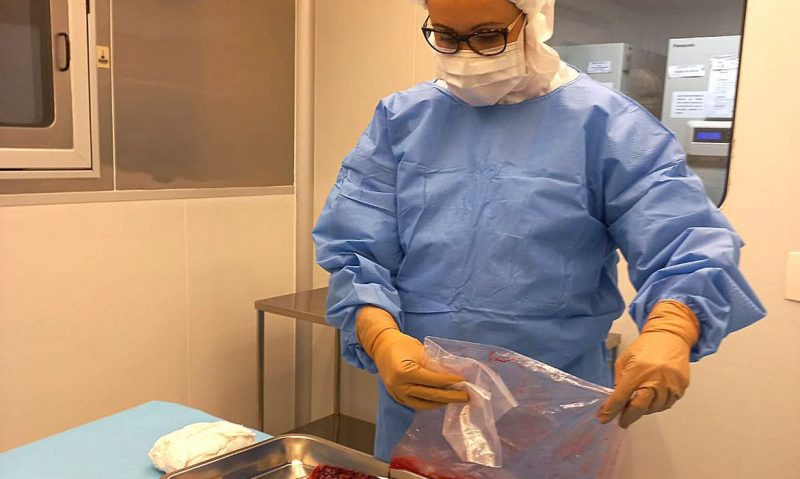
Researchers from INTO (National Institute of Traumatology and Orthopedics) of the Ministry of Health are developing studies to introduce in Brazil the use of biological dressings made from placental tissue, which is usually discarded after the birth of children.
 Placenta-based biological dressing developed by INTO researchers Photo: INTO/Disclosure – Photo: INTO/Disclosure/ND
Placenta-based biological dressing developed by INTO researchers Photo: INTO/Disclosure – Photo: INTO/Disclosure/NDAccording to Agência Brasil, Into has been studying the capture and preparation of the amniotic sac since November 2021 to produce dressings that can speed up the healing of serious injuries.
In an interview with Agência Brasil, the plastic surgeon and technician in charge of the Institute’s Skin Bank, Sandra Baiao, said that the study is currently in the testing phase.
A total of 20 placentas were collected through a partnership with Maternidade Carmela Dutra, a division of the Municipal Health Network in Rio de Janeiro. On average, there are six dressings per placenta.
“We have already collected several placentas and have done all the work to prepare these placentas to evaluate the result. Some tests are being carried out regarding the safety of using this material,” he explained.
The project envisages a second phase, when bandages will be applied to patients. To do this, a new batch of placentas will be collected in the partner maternity hospital.
“At the moment, we have not yet started this use. We are still in the first phase of quality and biosafety evaluation of the placenta-based biological dressing to be used in patients,” said Sandra Baiao. According to her estimates, the second phase should begin at the end of this year.
Regulation
Although the use of the amniotic sac in the treatment of some types of wounds is already underway in countries such as the US, Germany and France, the project is still in the process of being regulated in Brazil.
“It is not yet regulated as a treatment in Brazil. It is still experimental and is in the process of being regulated,” the researcher said.
The doctor believes that Into’s research can help speed up this process.
“While we have international guidelines, we want to evaluate the applicability of this to our population, in this case the specific profile of Brazilians with difficult-to-heal wounds. We believe that this will greatly contribute to the optimization of the regulatory process.”
However, Sandra Baiao warned that not every wound can be covered with a placenta-based dressing. These are specific wounds that have some characteristics that make healing difficult.
In these cases, the use of an amniotic sac can help speed up this process and thereby reduce the patient’s hospitalization time and rehabilitation time many times over so that he can return to his activities that he had before the injury. .
financing
To take the placenta, the Banco Multitecidos do Into team goes to the maternity ward, gets to know the mothers and explains what the study consists of in order to get permission to perform the procedure.
Sandra Baiao said that the collection does not interfere with the delivery in any way.
“We are expecting a baby. When the obstetrician removes the placenta, it is not thrown away, but is collected in a sterile way and delivered to Into,” he explains.
In the institute’s multitissue bank, the placenta is being prepared to transform part of the amniotic membrane into biological dressings. After five days, the tissue is rectangular and stored in packages that are sent to the refrigerator, which allows the dressing to be preserved.
The doctor responsible for the study specified that the amniotic membrane removed from the placenta is transparent, unlike the skin of tilapia fish, for example, which is used for burns.
“The amniotic membrane, separated from the rest of the placenta, is completely transparent. It differs from tilapia skin in appearance as well as other properties in terms of healing,” he said.
Study
In parallel with the Into study, a larger multicenter study is planned that will involve other tissue banks, in this case skin banks, but which depends on which regulation is initiated.
In this study, in addition to the Banco de Multitecidos do Into, the leather benches of Santa Casa de Porto Alegre will participate; Evangelical University Hospital in Curitiba; and Hospital das Clínicas at the University of São Paulo (USP), who also work on amniotic membranes.
The goal is to use the membrane in areas where skin is removed for grafting, such as the thighs and in burn patients.
Source: Ndmais